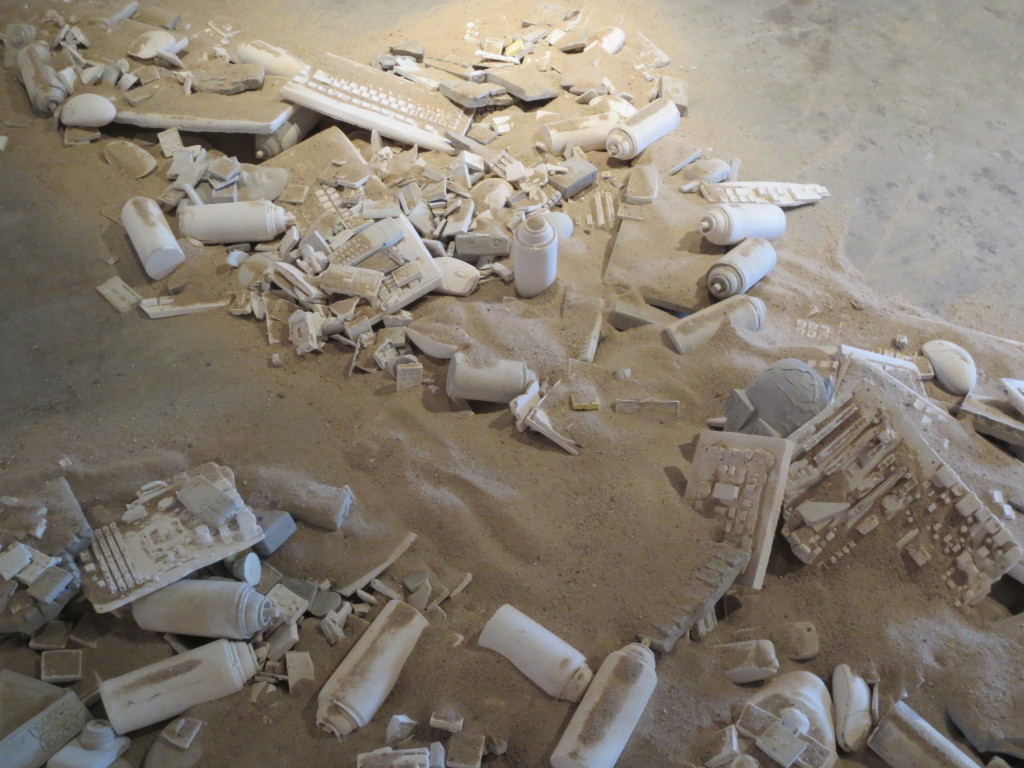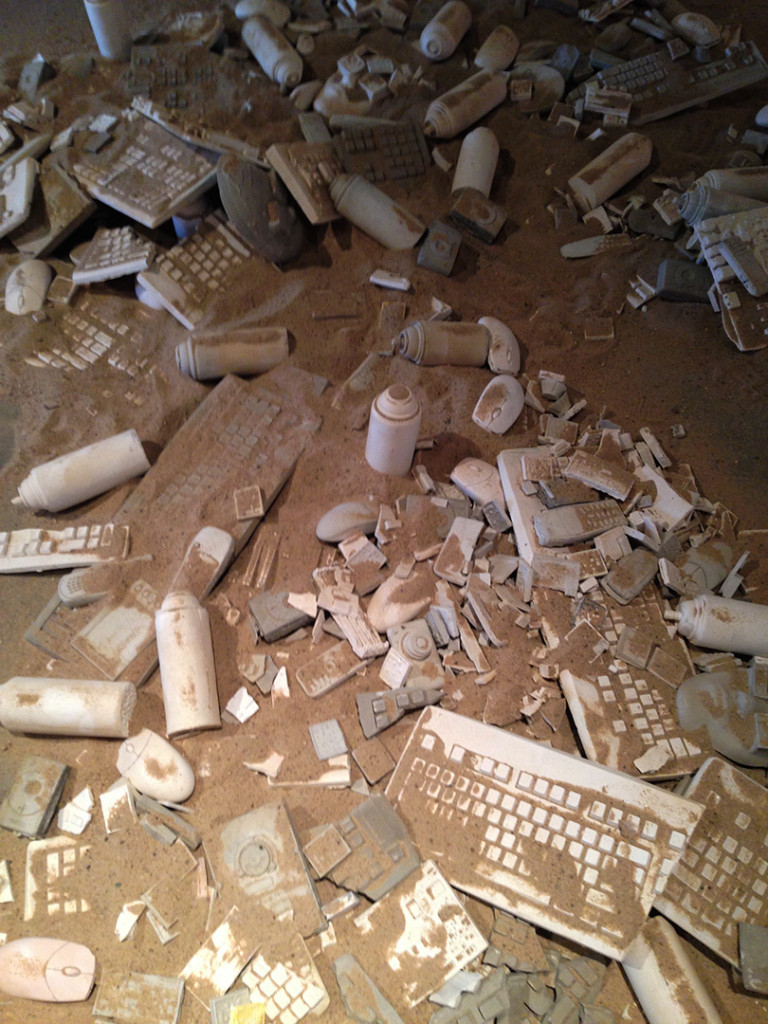


Concept: Technophemera highlights the speed of technology’s evolution. With new digital devices produced every minute, technology both reinvents itself and renders obsolete at an exponential rate.
Installation: The installation will be an archaeological site filled with dated computer equipment appearing as a graveyard of old hardware. The technology will be cast in concrete and burrowed in sand suggesting a fossilization process. In adding to the effect are dig site tools such as shovels, brushes, magnifying glasses and caution tape.

Location: Technophemera will be installed on the campus of LIU Post (720 Northern Blvd , Brookville, NY 11548) in the spring of 2015. It will first be installaed into the Concrete To Data public exhibition at the Steinberg Museum of Art at Hillwood.
Exhibition Period: Indoors to Outdoors – January 2015- May 2015
Aproximate Size: 10 ft wide x 10 ft long.

Student collaboration: Technophemera will be created in collaboration with LIU Post undergraduate students studying visual art. Our goal is to expose the students to the process and challenges of creating site-specific installation art. We plan to incorporate student input into the realization of the project.
Process: “Technophemera” will involve traditional casting and moldmaking techniques including creation of rubber molds and pouring of liquid concrete. It is envisioned that functional excavation equipment found on archeological dig sites will be incorporated into the project in order to produce the feel of authenticity.
Time Capsule: We plan to bury Technophemera under the ground in hopes that it stand as a time capsule preserving the look and feel of technology hardware as it appeared at the turn of the 20th Century.
